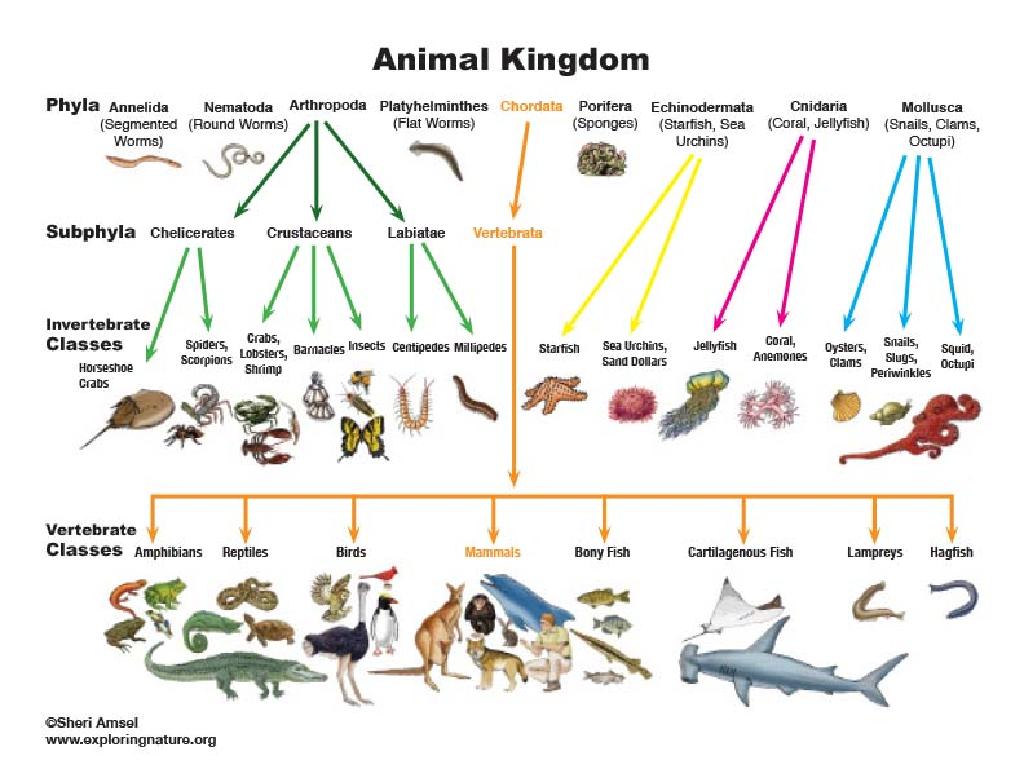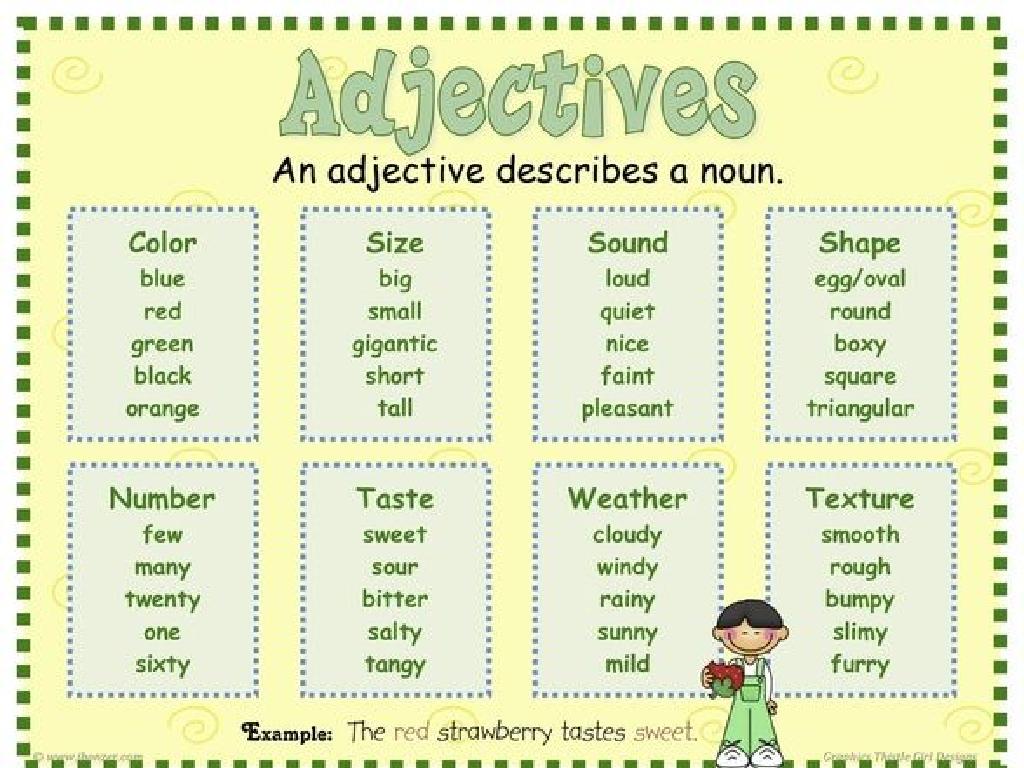Scams & Fraud
Subject: Life skills
Grade: High school
Topic: Financial Literacy
Please LOG IN to download the presentation. Access is available to registered users only.
View More Content
Introduction to Financial Literacy: Scams & Fraud
– Define Financial Literacy
Understanding money management, investments, and financial planning.
– Importance of scam awareness
Recognizing scams helps protect your finances and personal information.
– Overview of common scams
Phishing, identity theft, and Ponzi schemes are prevalent scams.
– Strategies to avoid fraud
Verify sources, protect personal info, and be skeptical of ‘too good to be true’ offers.
|
This slide introduces the concept of financial literacy and its significance in safeguarding against scams and fraud. Financial literacy is the ability to understand and effectively use various financial skills, including personal financial management, budgeting, and investing. Awareness of scams and fraud is crucial for protecting one’s financial health and personal information. The lesson will cover common types of scams, such as phishing and identity theft, and provide students with strategies to recognize and avoid fraudulent schemes. Encourage students to think critically about offers they receive and to always verify the legitimacy of requests for personal information.
Understanding Scams and Fraud
– Define a scam
– A scam is a deceptive scheme or trick to defraud someone.
– Common scam types
– Phishing: stealing info via fake emails. Lottery: false winnings. Ponzi: fake investments.
– Scammers’ targeting methods
– Scammers use fear, greed, and urgency to lure victims.
– Protecting against scams
|
This slide aims to educate students on the definition, types, and tactics of scams, as well as basic protection measures. A scam is essentially a fraudulent act designed to cheat someone out of money or personal information. Highlight common scams like phishing, where scammers impersonate legitimate entities to steal information; lottery scams that promise big winnings in exchange for a fee; and Ponzi schemes that pay returns to earlier investors with funds from more recent investors. Discuss how scammers often prey on emotions to manipulate their targets. Conclude by emphasizing the importance of skepticism and vigilance to avoid falling victim to scams. Encourage students to share any experiences or stories they may have heard about scams to make the discussion more engaging.
Recognizing Fraud
– Define fraud
– Deceptive practice for personal gain
– Scams vs. fraud
– Scams are deceptive schemes, fraud is deception for financial gain
– Everyday examples of fraud
– Identity theft, phishing emails, fake charities
– Protecting yourself from fraud
|
This slide aims to educate students on the concept of fraud and how it differs from scams. Fraud is a broad term that encompasses any intentional deception made for personal gain or to damage another individual. The distinction between scams and fraud is subtle but important; scams are generally schemes to deceive and defraud individuals or groups, while fraud is often more systematic and involves financial deception. Provide real-life examples such as identity theft, phishing emails, or fake charities to illustrate how fraud can manifest in everyday situations. Emphasize the importance of being vigilant and the steps one can take to protect personal information and finances from fraudulent activities. Encourage students to think critically about the information they share online and to question offers that seem too good to be true.
The Impact of Scams and Fraud
– Consequences of being scammed
– Financial loss and personal stress
– Emotional toll of fraud
– Feelings of betrayal and embarrassment
– Effects on credit score
– Lower credit scores can affect loans and interest rates
– Reputation damage long-term
– Trust issues and reduced credibility in personal and professional life
|
This slide aims to educate students on the serious repercussions of falling victim to scams and fraud. It’s crucial to discuss not only the immediate financial losses but also the emotional distress that can result from being defrauded. Students should understand that the impact of fraud can extend well beyond the initial incident, potentially harming their credit scores and making it more difficult to obtain loans or favorable interest rates in the future. Additionally, the damage to one’s reputation can lead to a loss of trust among peers and colleagues, which can have lasting effects on personal and professional relationships. Use real-life examples to illustrate these points and emphasize the importance of vigilance and skepticism in protecting oneself against scams.
Protecting Yourself Against Scams & Fraud
– Exercise critical thinking online
– Don’t take online information at face value; verify before trusting.
– Share personal info safely
– Only provide personal details on secure, reputable websites.
– Create secure passwords
– Strong passwords have a mix of letters, numbers, and symbols.
– Use two-factor authentication
– Two-factor authentication adds an extra layer of security.
|
This slide aims to educate students on the best practices for safeguarding their personal information and enhancing their online security. Encourage critical thinking and a healthy skepticism when browsing online, emphasizing the importance of verifying sources and not accepting information as true without evidence. Discuss safe practices for sharing personal information, such as ensuring websites are secure (look for HTTPS) and reputable before entering sensitive details. Stress the importance of creating strong, unique passwords for different accounts and the added security that two-factor authentication provides. Use examples relevant to high school students, like creating a password for their school portal or email account. This slide will help students understand the practical steps they can take to protect themselves from becoming victims of scams and fraud.
Case Studies: Understanding Scams & Fraud
– Explore real-life scam examples
– E.g., phishing emails, fake lotteries
– Analyze the pitfalls in each case
– Identify red flags and deceptive tactics
– Discuss prevention strategies
– Steps like verifying sources, not sharing personal info
– Learn from others’ mistakes
|
This slide aims to provide students with a practical understanding of scams and fraud through real-world examples. By analyzing case studies, students can learn to identify common tactics used by scammers, such as emotional manipulation or too-good-to-be-true offers. Discussing each scenario, students should focus on the red flags that could have signaled a scam and the importance of skepticism when dealing with unsolicited offers. Emphasize critical thinking and the necessity of verifying the legitimacy of any request for personal or financial information. Encourage students to share any experiences they or their acquaintances have had with scams to foster a more interactive and engaging learning environment.
Reporting Scams and Fraud
– Steps to take post-scam suspicion
– Verify the scam, collect evidence, and contact your bank.
– Reporting scams to authorities
– Report to FTC, local police, and Internet Crime Complaint Center.
– Resources for scam victims
– Utilize support from the National Consumer League and Cybercrime Support Network.
– Importance of timely reporting
|
When students suspect a scam or realize they have been defrauded, it’s crucial to act immediately. They should first verify the scam, gather all related evidence, and contact their financial institution to protect their assets. Reporting the incident to the Federal Trade Commission (FTC), local law enforcement, and the Internet Crime Complaint Center is essential for legal action and to prevent further scams. Provide students with resources such as the National Consumer League’s Fraud.org and the Cybercrime Support Network to help them navigate the aftermath of being scammed. Emphasize the importance of timely reporting to increase the chances of recovering lost funds and bringing the fraudsters to justice. This slide aims to empower students with knowledge and resources to effectively respond to scams and fraud.
Class Activity: Spot the Scam!
– Interactive group activity
– Review common scam examples
– Emails, calls, or texts that seem suspicious or too good to be true.
– Identify scam red flags
– Urgency, requests for personal info, unverified contacts.
– Discuss scam response strategies
– Never give out personal info, verify the source, report scams.
|
This class activity is designed to engage students in a practical exercise to identify and respond to scams. Divide the class into small groups and provide them with various scenarios of common scams, such as phishing emails, fake lotteries, and fraudulent calls. Each group will discuss and pinpoint the warning signs of a scam in the examples provided. Afterward, lead a class discussion on the best practices for responding to potential scams, emphasizing the importance of not sharing personal information, verifying the legitimacy of contacts, and reporting suspected scams to authorities. This activity aims to equip students with critical thinking skills and practical knowledge to protect themselves in the digital age.
Wrapping Up: Scams & Fraud Awareness
– Recap of today’s key lessons
– Open floor for student questions
Feel free to ask any doubts or share experiences related to scams.
– Additional resources for learning
Websites, books, and hotlines for scam prevention.
– Stay vigilant and informed
|
As we conclude today’s session on Scams & Fraud, it’s important to summarize the key points discussed. Go over the types of scams we’ve learned, the red flags to watch out for, and the steps to take if one suspects fraudulent activity. Encourage an open discussion and allow students to ask questions or share personal experiences related to the topic, which can foster a more interactive learning environment. Provide students with a list of additional resources, such as reliable websites, informative books, and contact information for financial fraud hotlines. Lastly, remind students of the importance of staying vigilant and continuously informed to protect themselves and their finances from scams and fraud.






